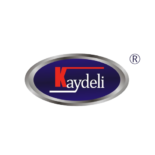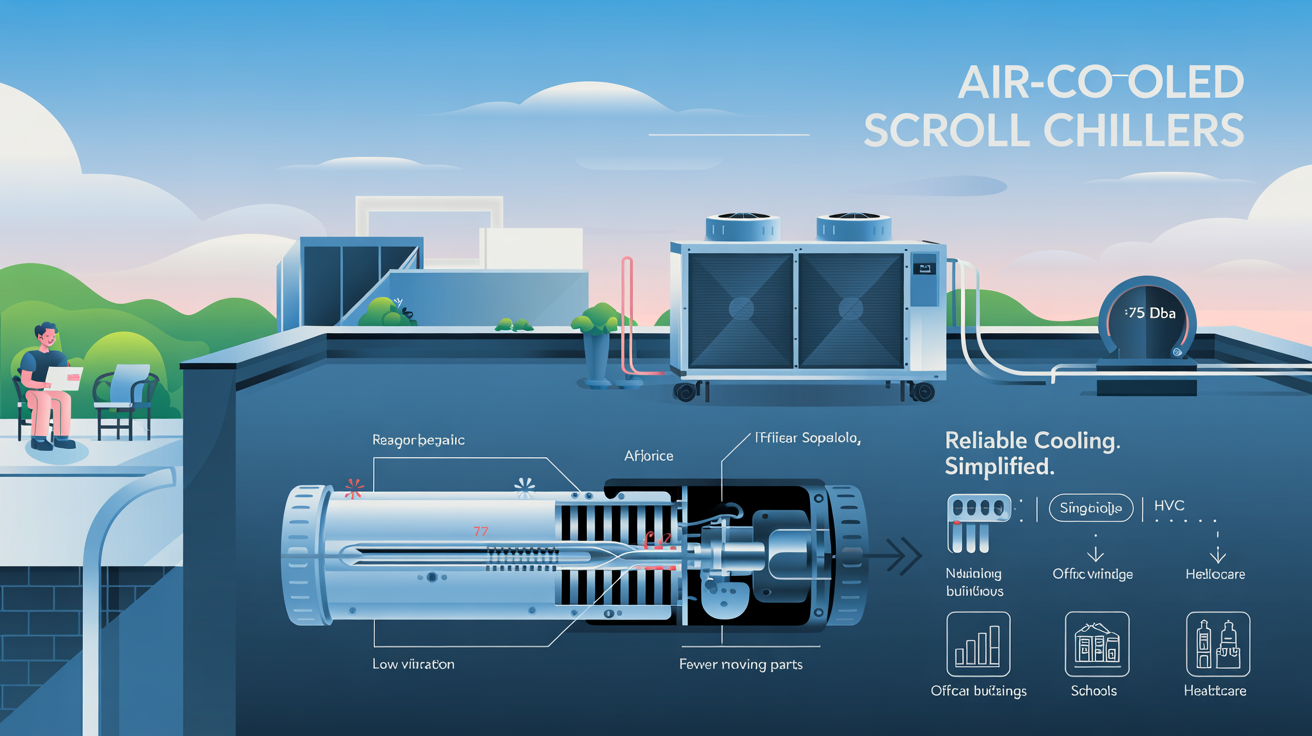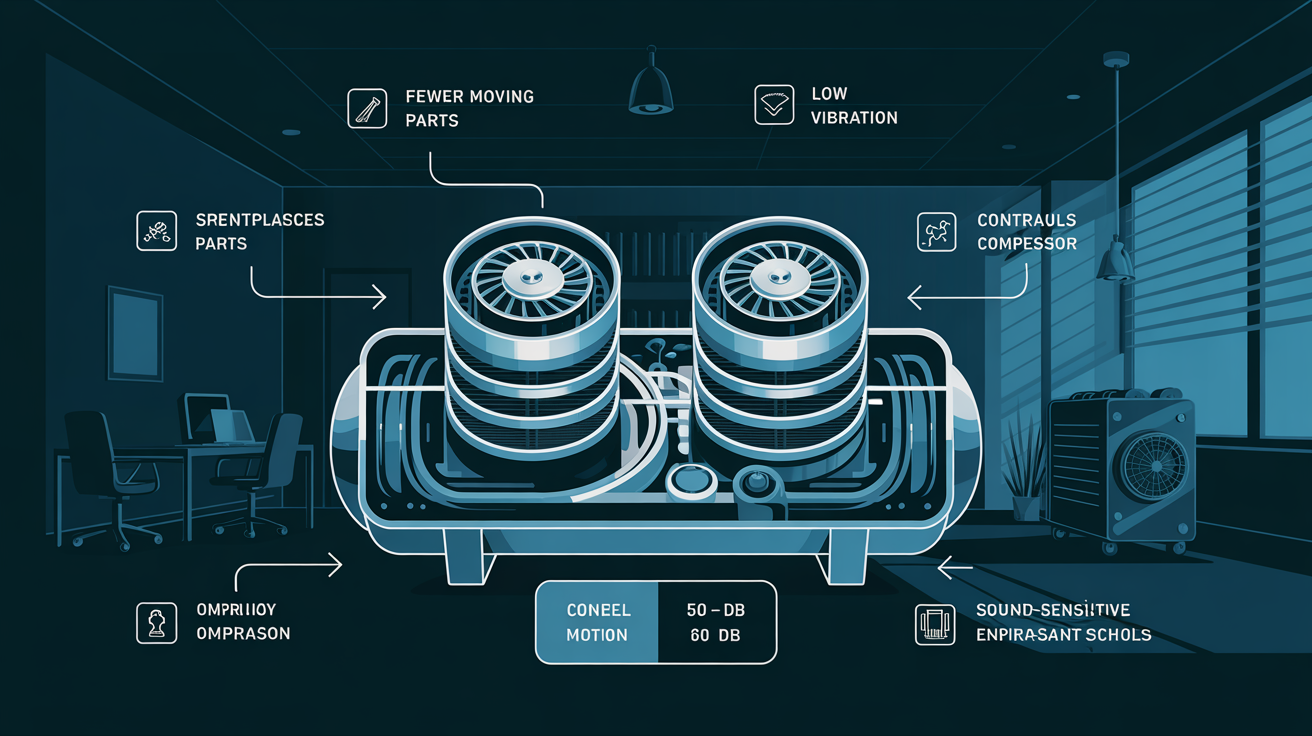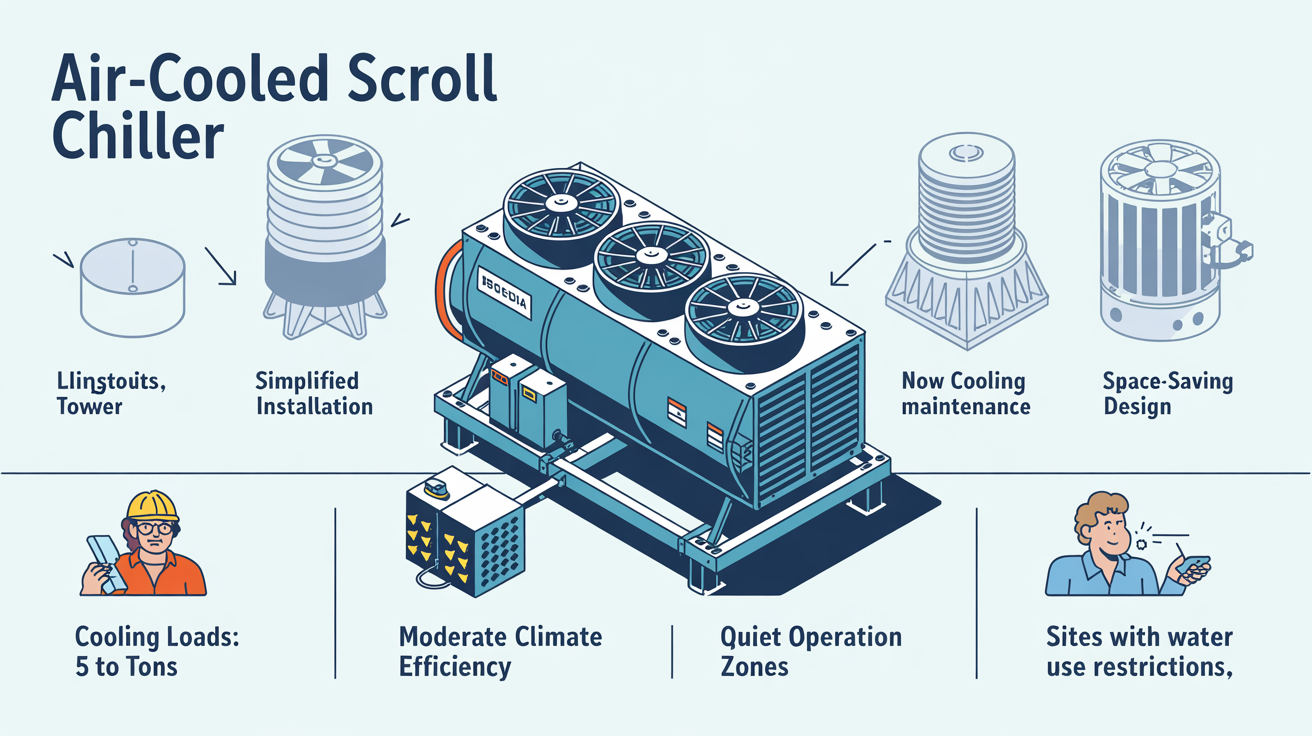Feeling overwhelmed trying to find the right cooling system for your facility? You need something reliable, energy-efficient, and quiet, but without sky-high installation costs or constant maintenance demands. An air-cooled scroll chiller1 might just be the surprisingly effective and straightforward solution you’ve been looking for.
An air-cooled scroll chiller is often a smart choice because it combines the proven high reliability and notably quiet operation of scroll compressors with the significant installation simplicity and reduced maintenance of an air-cooled design, offering efficient cooling for a wide range of small to medium-large applications.
Choosing a chiller is a significant investment, impacting your facility’s operational smoothness, energy bills, and even workplace comfort. You need performance you can count on, day in and day out, without adding unnecessary complexity or cost. Air-cooled scroll chillers have become incredibly popular precisely because they hit a sweet spot for many businesses. Let’s explore the specific features and benefits that make this technology a practical and often cost-effective option for dependable temperature control. Read on to determine if it aligns with your operational needs.
What Makes the Scroll Compressor Technology So Reliable and Quiet?
Are you tired of the constant worry about unexpected compressor failures leading to expensive downtime? Is the persistent noise from your current cooling equipment disrupting your workspace or annoying your neighbors? The type of compressor inside your chiller makes a world of difference in addressing these common concerns.
Scroll compressors achieve remarkable reliability and exceptionally quiet operation primarily due to their ingenious design featuring very few moving parts and a smooth, continuous orbital compression process. This drastically minimizes vibration and wear, leading to longer equipment life and significantly lower noise levels compared to many other compressor types.
Think of the compressor as the powerhouse of your chiller. It’s responsible for the critical task of compressing and circulating the refrigerant that ultimately produces the cooling effect your facility relies on. Its fundamental design dictates not only how efficiently the chiller runs but also how reliable and noisy it will be. Reliability is non-negotiable – as I always emphasize to my clients at Kaydeli, an unexpected chiller shutdown can halt critical processes, damage inventory, or disrupt essential services. Furthermore, noise pollution is an increasingly important factor, especially for chillers installed near offices, schools, hospitals, or residential areas. Let’s delve into the specific engineering details that allow the scroll compressor design to excel in both critical areas – reliability and low noise.
Diving Deeper: The Ingenuity of the Scroll Compressor
The scroll compressor’s elegance lies in its operational simplicity. It works using two interleaved spiral-shaped components, commonly referred to as scrolls. One scroll remains stationary, while the other (the orbiting scroll) moves in a precise orbital path driven by a motor. This orbiting motion doesn’t involve rotation of the scroll itself, just a continuous circling movement relative to the fixed scroll.
Here’s a breakdown of how this translates into tangible benefits:
- Compression Mechanism: As the orbiting scroll moves, it forms crescent-shaped gas pockets between itself and the stationary scroll. These pockets trap refrigerant gas entering from the outer edge. The orbital motion progressively pushes these pockets towards the center while simultaneously shrinking their volume. This continuous process efficiently compresses the gas until it reaches the desired pressure and is discharged through a central port on the fixed scroll.
- Significantly Fewer Moving Parts: This is a cornerstone of scroll reliability. Compared to reciprocating compressors (with pistons, rings, rods, valves, crankshafts per cylinder), scroll compressors2 are fundamentally simpler. Key moving components are essentially the orbiting scroll, the driveshaft, and the supporting bearings. Industry resources, like those from Drycool Systems, emphasize that this reduced component count directly translates to fewer potential failure points, less friction, and significantly reduced wear and tear over the chiller’s lifespan.
- Smooth, Continuous Motion & Reduced Vibration: The orbital movement is inherently smooth and continuous, lacking the harsh starting, stopping, and reversing forces found in reciprocating designs. This drastically cuts down on vibration and pulsation within the compressor and the connected refrigerant lines. Less vibration means less mechanical stress on welds, joints, and bearings, further enhancing long-term durability and reducing the likelihood of fatigue failures.
- Inherent Robustness: Scroll designs often include features that allow the scrolls to separate slightly (both axially and radially) under abnormal conditions. This compliance mechanism allows small liquid refrigerant slugs or minor debris particles to pass through the scrolls without causing catastrophic damage – a valuable robustness feature in real-world operating conditions.
- Exceptional Quietness: This is a major selling point. The smooth operation and lack of noisy intake/discharge valves (like the "clapping" sound in piston compressors) result in very low operating sound levels. Manufacturers like Carrier, for example, highlight features like their low-sound fan systems (e.g., AeroAcoustic®) used in conjunction with scroll compressors2, achieving sound levels significantly lower than older technologies. Industry sources like IQSDirectory often cite typical noise levels for air-cooled scroll chiller1s as being below 75 dBA at standard measurement distances, making them suitable for noise-sensitive locations.
- High Efficiency: Scroll compressors boast high volumetric efficiency because the compression process minimizes gas leakage and re-expansion. While their peak isentropic efficiency might be slightly lower than reciprocating types at very high-pressure ratios according to some technical analyses (like those found on ScienceDirect), they offer excellent full-load EER (Energy Efficiency Ratio) and, especially with modern VSD integration, increasingly competitive part-load efficiency (IPLV – Integrated Part Load Value).
This blend of engineered simplicity leading to reliability, and smooth motion resulting in quietness, explains why scroll compressors2 are the technology of choice for a vast range of modern air-cooled chillers.
How Does the Air-Cooled Design Benefit Installation and Operation?
Feeling daunted by the potential scale, complexity, and infrastructure needed for a new chiller system, particularly a water-cooled one? Are you concerned about escalating water usage, the costs and handling of chemical treatments, and the intensive maintenance schedules associated with cooling towers? The air-cooled design3 offers a clear path towards simplification and reduced operational burden.
An air-cooled design3 dramatically benefits installation by completely eliminating the need for cooling towers, condenser water pumps, and extensive water piping networks. Operation is also significantly simpler and often less expensive due to easier maintenance (focused on air-side coil cleaning) and total elimination of water consumption and treatment.
Beyond the type of compressor used, the method chosen for rejecting the waste heat generated during the refrigeration cycle is a fundamental design choice with profound impacts. Air-cooled systems achieve this by using fans to force ambient air directly across condenser coils containing the hot refrigerant. This contrasts sharply with water-cooled systems, which require a separate water loop, pumps, and a cooling tower to transfer heat first from refrigerant to water, and then from water to the atmosphere via evaporation. The practical advantages of the air-cooled approach often streamline projects, reduce lifetime costs, and simplify facility management.
Diving Deeper: Practical Advantages of Air-Cooling
Let’s examine exactly how opting for an air-cooled design, particularly when paired with reliable scroll compressors, makes things easier from the initial planning stages right through years of operation:
Installation Benefits:
- Elimination of Major Water-Side Infrastructure: This is the most striking difference. You completely avoid the cost, complexity, and space requirements of a cooling tower, large condenser water pumps, and the chemical feed system for water treatment. Industry resources like ARANER point out this also removes the need for significant structural support often required for heavy, water-filled towers, simplifying building design or retrofits.
- Drastically Reduced Piping: The plumbing work is vastly simplified. Without the need to circulate large volumes of condenser water between the chiller and a remote cooling tower, you only need to install the chilled water supply and return lines to your process or building air handlers. This directly translates to lower material costs, significantly faster installation labor, and fewer potential points for future leaks.
- Fewer Major Equipment Components: No cooling tower means no tower fan motors, no tower basin heaters (for cold climates), and no condenser water pumps. Fewer large rotating components mean lower initial equipment costs and fewer items requiring electrical connections and ongoing maintenance.
- Simplified Site Layout & Indoor Space Savings: Air-cooled scroll chillers are typically designed as integrated, self-contained packages intended for outdoor installation (on a roof or ground-level pad). Manufacturers like Trane showcase these packaged designs. This frees up valuable indoor mechanical room space that would otherwise be needed for pumps and potentially the chiller itself in a water-cooled split system. This outdoor placement simplifies logistics, requiring mainly a stable mounting surface, power supply, and chilled water connections.
- Potentially Faster Project Timelines: The reduced complexity, fewer interdependencies between systems, and packaged nature of air-cooled units often lead to quicker overall project completion compared to water-cooled installations involving multiple contractors and phases.
Operational & Maintenance Benefits: - Zero Process Water Consumption: In regions grappling with water scarcity, drought conditions, or simply high water and sewage costs, this is a critical advantage. Air-cooled chillers consume no water for the heat rejection process. Cooling towers, in contrast, lose substantial amounts of water through evaporation (their primary cooling mechanism), drift (water droplets carried away by airflow), and blowdown (water intentionally drained to control mineral concentration). Resources like Cold Shot Chillers emphasize these water savings.
- Elimination of Water Treatment: This removes a significant and often complex operational task. Maintaining proper water chemistry in a cooling tower loop is crucial to prevent scale formation, corrosion of pipes and heat exchangers, and the growth of harmful bacteria like Legionella. This requires ongoing chemical purchases, handling procedures, regular testing, and compliance with health regulations. Air-cooled systems, as highlighted by KKT Chillers USA, completely avoid this entire aspect of maintenance.
- Simplified Maintenance Focus: The primary maintenance tasks shift to the air-side components:
- Condenser Coil Cleaning: Keeping the outdoor condenser coils free of dust, leaves, pollen, insects, and other airborne debris is vital for efficiency. Clogged coils impede airflow and heat transfer, forcing the chiller to work harder. Regular cleaning (using appropriate methods like water washing or specialized cleaners) is the most critical routine task.
- Fan & Motor Inspection: Periodically checking the condenser fans and their motors for proper operation, blade condition, and lubrication (if required).
- Refrigerant Circuit Integrity: Performing standard checks on refrigerant charge and pressures, which is common to all chiller types.
This maintenance regime is generally less demanding, less specialized, and less costly than the comprehensive water-side care required by cooling towers. Analysis by resources like CSemag often points to lower overall maintenance costs for air-cooled plants.
The combination of these installation and operational simplicities makes air-cooled scroll chillers4 a highly practical, often more economical choice, particularly for facilities aiming to minimize operational complexity, utility costs, and environmental impact related to water use.
When is an Air-Cooled Scroll Chiller the Ideal Fit for My Application?
Feeling uncertain whether an air-cooled scroll chiller has the capacity you need? Wondering if the climate in your area makes it a less efficient choice than a water-cooled option? Selecting the most appropriate chiller type is crucial – choosing incorrectly can lead to insufficient cooling, wasted energy, or unnecessary upfront costs. Understanding the ideal application profile for air-cooled scroll technology is key to making a smart investment.
An Air-Cooled scroll chiller is typically the ideal fit for applications with small to medium-large cooling loads (ranging widely from a few tons up to approximately 500 tons), especially where lower initial cost5, installation simplicity, quiet operation, and water conservation are primary decision drivers. They perform most efficiently in moderate climate conditions.
Every chiller technology occupies a niche defined by its strengths and limitations. Air-cooled scroll chillers, while versatile, are not the universal answer for every cooling need. Knowing precisely when they represent the best value proposition compared to alternatives – such as larger air-cooled screw chillers or various water-cooled chiller types (scroll, screw, centrifugal) – is essential for optimizing performance, reliability, and total cost of ownership in your specific facility. Let’s pinpoint the scenarios and conditions where this technology consistently proves to be the most advantageous choice.
Diving Deeper: Defining the Sweet Spot
An air-cooled scroll chiller generally emerges as the leading contender under these circumstances:
- Small to Medium-Large Cooling Loads:
- This is their primary domain. Scroll compressors are highly effective and economical in this range. While configurations vary, manufacturers like Carrier and Trane offer air-cooled scroll models spanning capacities roughly from 10 tons up to 500 or even 550 tons. (TopChillers also notes ranges up to 400 tons). Larger capacities within this range are typically achieved using multiple scroll compressors installed in parallel circuits within a single chiller frame, allowing for staged capacity control. For demands significantly exceeding this range, screw or centrifugal compressors usually become more practical.
- Emphasis on Lower Initial Cost & Simplicity:
- For a given capacity within their typical range, air-cooled scroll chillers1 generally have a lower purchase price than air-cooled screw chillers. Critically, when comparing against water-cooled systems, the total installed cost of an air-cooled system (which avoids the cooling tower, pumps, complex piping, and associated labor) is often substantially lower, making them very attractive for budget-driven projects or simpler facilities.
- Noise Sensitivity is a Priority:
- Their inherently quiet operation makes them stand out. If the chiller needs to be located near occupied spaces like office windows, classrooms, hospital rooms, or adjacent residential properties, the lower sound signature of scroll compressors (often aided by specialized fan designs) is a major advantage.
- Water Conservation Goals or Constraints:
- In areas facing water scarcity, high water/sewer utility rates, or corporate sustainability mandates aimed at reducing water footprint, the zero water consumption6 of air-cooled chillers makes them an easy choice over thirsty water-cooled systems.
- Simplified Maintenance is Preferred:
- Facilities with limited maintenance staff or those wanting to avoid the complexities and recurring costs of cooling tower water treatment often favor the relative simplicity of maintaining an air-cooled unit (coil cleaning being the main task).
- Moderate Climate Conditions:
- Air-cooled chillers achieve their best energy efficiency when the ambient outdoor air temperature is moderate. As Trane’s resources and CSemag articles explain, their efficiency is directly tied to the dry-bulb air temperature. In very hot weather, this temperature can be significantly higher than the wet-bulb temperature that governs cooling tower performance. This means that during peak heat, a water-cooled chiller (benefiting from evaporative cooling) will typically operate more efficiently (use less energy per ton of cooling). However, air-cooled units remain functional, and for many climates or facilities where simplicity outweighs peak energy concerns, they are still preferred. Modern units often boast high efficiency ratings (EER up to ~10.9, IPLV up to ~17.9 noted by Carrier, similar ranges by Trane), especially with VSDs enhancing part-load performance, as research highlighted on ScienceDirect suggests.
- Common Applications:
- Typical uses include office buildings, retail centers, schools, hotels, light industrial processes, and healthcare facilities where their capacity range, noise profile, and simplicity are well-matched to the requirements.
Updated Comparison Quick View:
| Feature | Air-Cooled Scroll | Air-Cooled Screw | Water-Cooled (Generic) |
|---|---|---|---|
| Capacity Range | Small to Medium-Large (~<500 tons) | Medium to Large (~150-500+ tons) | Small to Very Large |
| Initial Cost | Lower | Higher | Variable (Chiller + Tower System) |
| Noise | Quietest | Moderate | Chiller Quiet (Tower noise varies) |
| Installation | Simplest | Simple (No Tower) | Most Complex (Tower, Pumps, Piping) |
| Maintenance | Simple (Coils/Fans) | Simple (Coils/Fans) | Complex (Water Treatment crucial) |
| Water Use | None | None | High (Evaporation) |
| Hot Climate Eff. | Lower | Moderate | Higher |
| Part-Load Eff. | Good (Staged), Better (w/ VSD) | Very Good (Slide/VSD) | Generally Good to Very Good |
In essence, the air-cooled scroll chiller represents an outstanding balance of performance, reliability, quietness, and cost-effectiveness for a vast number of common cooling applications, particularly when installation simplicity and water conservation are key considerations.
Conclusion
In conclusion, air-cooled scroll chillers offer a highly reliable, remarkably quiet, and efficient cooling solution for small to medium-large capacity needs, providing compelling advantages in installation simplicity, reduced maintenance, and complete water conservation.
-
Explore the advantages of air-cooled scroll chillers, including energy efficiency and low maintenance, to see if it’s the right fit for your facility. ↩ ↩ ↩
-
Learn about the unique design and benefits of scroll compressors, which offer reliability and quiet operation for cooling systems. ↩ ↩ ↩
-
Discover how air-cooled designs simplify installation and operation, making them a cost-effective choice for many facilities. ↩ ↩
-
Explore the advantages of air-cooled scroll chillers, including cost savings and maintenance simplicity, to make informed decisions for your cooling needs. ↩
-
Discover the factors that lead to lower initial costs for air-cooled chillers, making them an attractive option for budget-conscious projects. ↩
-
Learn how zero water consumption in air-cooled chillers can save costs and support sustainability efforts, especially in water-scarce regions. ↩





